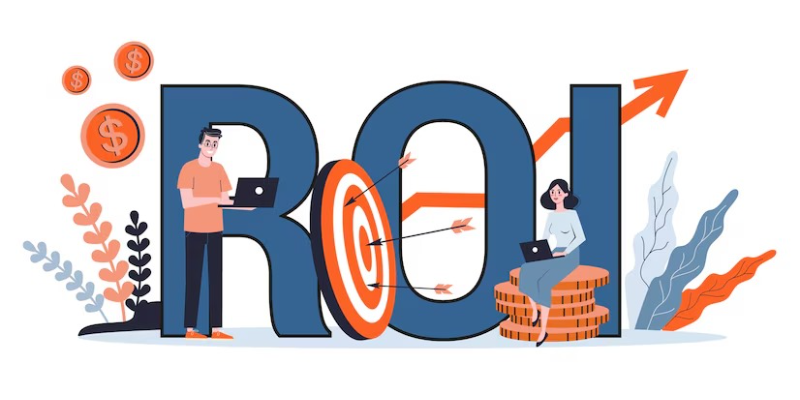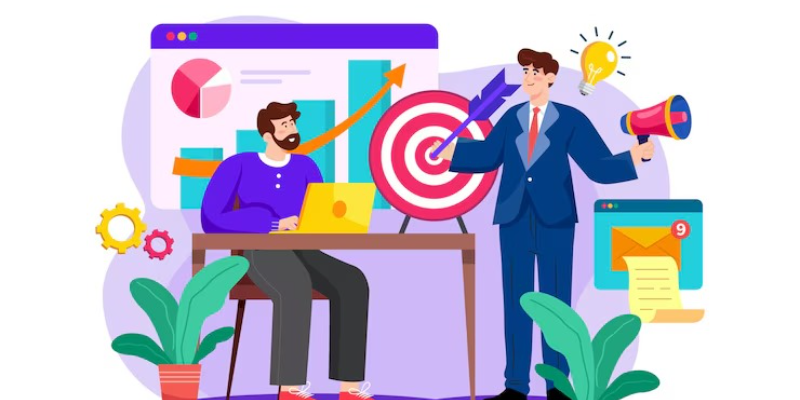

ROI-driven marketing techniques are used for the formulation of strategies and tactics for optimum return on investment from marketing. These techniques are used for the optimization of resources to cut time waste and give measurable results.
Some of the key ROI-driven marketing techniques are mentioned below:
Run paid search campaigns on high-intent keywords through Google ads, Bing ads, or other platforms. Pay-per-click campaigns are measurable, and you can control the marketing budget and optimize for conversions.
Affiliate marketing allows you to recruit affiliates who share your product or service details with your customers for commissions. A cost-performance strategy is thus calculated based on actual sales and leads as well as the pay of these influencers.
Now, influencer marketing deals with selecting influencers from your niche of interest. Through them, you will receive direct sales, and you'll be able to achieve your business goals.
Right after placing the affiliate link, you can now measure the ROI of a discount code.
The landing pages should be optimized to their full potential for conversion. On the landing pages, there should be clear calls to action, compelling copy, and trust signals. This may cause slight deviations from the conversion rates and significantly increase the return on investment.
High-quality SEO-optimized content promotes natural website traffic, which again gives a high return on investment because if it is ever created, you could use it for free. Target those long-tail keywords while responding to specific questions to craft content that answers customer requirements.
Use your valuable content to get leads (e-book, white paper, webinars). Nurture the leads collected from the targeted email marketing strategy designed to guide them all through conversion.
A two-minute video on YouTube, Instagram, or TikTok can be very effective in keeping prospects engaged and converting them. Video marketing typically has a better return on investment than text content because it can capture the audience's attention and then deliver the message within an even shorter time frame.
Through display ads and social media retargeting, mechanisms help in re-engagement of those visitors who didn't convert during their first visit to your website. Retargeting ensures that your brand stays in the minds of those potential customers, thus increasing the chances of conversion.
Send follow-up emails to users who have abandoned their carts or visited a particular page. Personalize these in a way that would make them want to close the sale.
Loyalty programs will give rewards or discounts to the customers with a higher frequency of purchases. Instead of losing the customer or spending more on getting a new customer, keeping him yields much higher rewards.
Collect feedback from your customers and later leverage them in the improvement of your products or services. People will believe what other fellow customers say about you and mostly believe in good reviews, which will more likely increase business conversion rates. Get an existing customer to refer a new customer by giving incentives like discounts or free products. Referral generally offers a high return on investment since they convert.
To personalize content that is on the website and in email messaging, as well as ads, according to consumer behavior and preferences. Out of all the messaging, personalization connects with the target audience and converts in the last mile. Trigger based on the abandoned cart, product views, or repeat visits to send offers and communications that can be converted.
Integrated campaigns ensure that the message is consistent from email, social media, website, and search ads. One approach will get brand recognition and build prospects for conversion.
Omni-channel approach: The customer experience is seamless when a person interacts with the brand through email, social media, or in-store. It increases the chances of conversion with customer loyalty.
Continuously test and adapt your marketing campaigns with real-time data. Agile marketing lets you pivot rapidly when something's not working for you and scale up what's working. Use tools like Google Analytics, HubSpot, or social media insights to track performance in real-time. This allows you to adjust campaigns and marketing budgets immediately, giving you an optimal return on investment.
Know what's driving conversions through touch points in the customer journey. Use that knowledge to better appropriate marketing dollars across channels driving the most impact.
Last-Click Attribution is a model that gives all the credit to the final interaction before conversion. Best for direct response campaigns, such as paid search or email marketing.
Build a loyal following for the brand. When users are engaged, they are more liable to refer your brand to people than any other marketing attempt, hence keeping the CPA minimal.
Encourage user-generated content that talks about your products or services. UGC is very profitable because the social proof is organic.
Campaign strategies have to be measurable, flexible, and have a long-term foundation of building relationships for drivers as the return on investment. Continuously review performance and make changes based on findings. Remember, effective tactics will provide sustainable benefits while providing cost-effective methods.

Marketing campaigns should be optimized for improvement in performance and higher ROI as well as optimal resource utilization. Optimizing the campaign involves continuous assessment of data, trying other variables, and changing the next step based on insights to improve performance. Here's the whole guide on marketing campaign optimization:
KPI's are Key Performance Indicators that make sure your campaign objectives are SMART: Specific, Measurable, Achievable, Relevant, and Time-bound.
This should ensure that the Key Performance Indicators for your marketing campaign align with a more general business objective that could be to boost brand awareness, increase leads, enhance conversions, or bring more website traffic.
Use tools like Google Analytics, Facebook Insights, HubSpot, and AdWords through which you can track your campaigns in real time. You can monitor the behavior of visitors within your website, emails, or even ads. View things like bounce rates, time on page, conversion rates, and CTR.
Identify where users are falling off in the conversion funnel. This means, for instance, if the recipient opens but doesn't click on that link in an email campaign, or if they do click but do not convert on your landing page.
You should try several parts of your campaigns to understand which elements work best for your target audience. Here are some elements you should test:
Ad copy, Headlines, Descriptions, CTAs
Images and visuals
Landing page design, Form placement, CTAs
Subject lines and email copy
Apply A/B testing to mediums like paid ads, email marketing, landing pages, and social media. Once you've run your tests, you compare which variation shows the best conversion or lowest cost and continue to scale your campaigns.

Make sure that your campaigns are showing up in front of the most relevant audience. Segment on:
Demographics: Age, gender, income, etc.
Geographics: location-based targeting
Behavioral Data: Previous purchases, web browsing activity
Psychographics: Values, interests, lifestyle
Use Google Ads Keyword Planner or Facebook Audience Insights to understand performance data, and focus the marketing budget on high-performing demographics.
All ads should have their messages in congruence with the landing page and should hold a uniform message. The CTA, "Buy Now," or "Download Today," should communicate the action that a user needs to take.
Experiment with various types of visuals in ads, be it images, videos, or carousel ads, on Facebook, Instagram, or Google Display Network.
The best landing page will be the one that makes sense with your ad or email message. A disconnect may cause you to have an extremely high bounce rate. Don't have too many fields on your forms. Your page-load times must be optimized. Make sure it's easy to navigate around your page. Add reviews, security badges, and other trust elements to give visitors the confidence they need to convert.
The best subject line is the best opener to your email. Try out different subject lines and see which one can give you the highest open rates. Send users different content based on behavior or demographics like new subscribers, abandoned carts, repeat buyers, and so on.
Identify the time for sending emails for maximum engagement. Many tools like Mailchimp and HubSpot can evaluate when it is the best time to send emails based on how the target audience behaves. Since the majority of email opens will come through a mobile device, there is a natural tendency for the email to be mobile-friendly with clear CTAs, making the general layout read well on smaller screens.
Leverage the automated strategies present on Google Ads or Facebook Ads, target CPA, and target ROAS, to better optimize the performance of the ads concerning your advertising objective. Understand how well the selected bidding strategy works and adjust the strategy from time to time.
Ascertain that you are moving the budget to the most performing campaigns, ad sets, or keywords. If specific ads, audiences, or keywords are working better than others, make sure that you allocate more resources to get the maximum return on investment.
If you have some campaigns or ad sets that are not performing as desired, immediately suspend or modify them to avoid wasting resources.
Utilize tools such as HubSpot, Marketo, and ActiveCampaign to automate tedious tasks, such as email drip campaigns, lead nurturing, or social media platform posting. Automate the delivery of personalized content through the dynamics of customer behavior, demographics, and preferences.
Monitor campaigns in real-time through dashboards and performance reports. Google Data Studio or Tableau platforms can help aggregate campaign performance data in one place for easier monitoring. Keep on experimenting, testing, and trying for even small improvements to your campaign components.
As a performance marketing agency Bangalore, Bud is an expert at creating and executing ROI-driven marketing. Bud can help improve performance marketing ROI with our team of digital marketing experts. Get in touch with Bud, we’ll help you create campaigns that provide effective results.